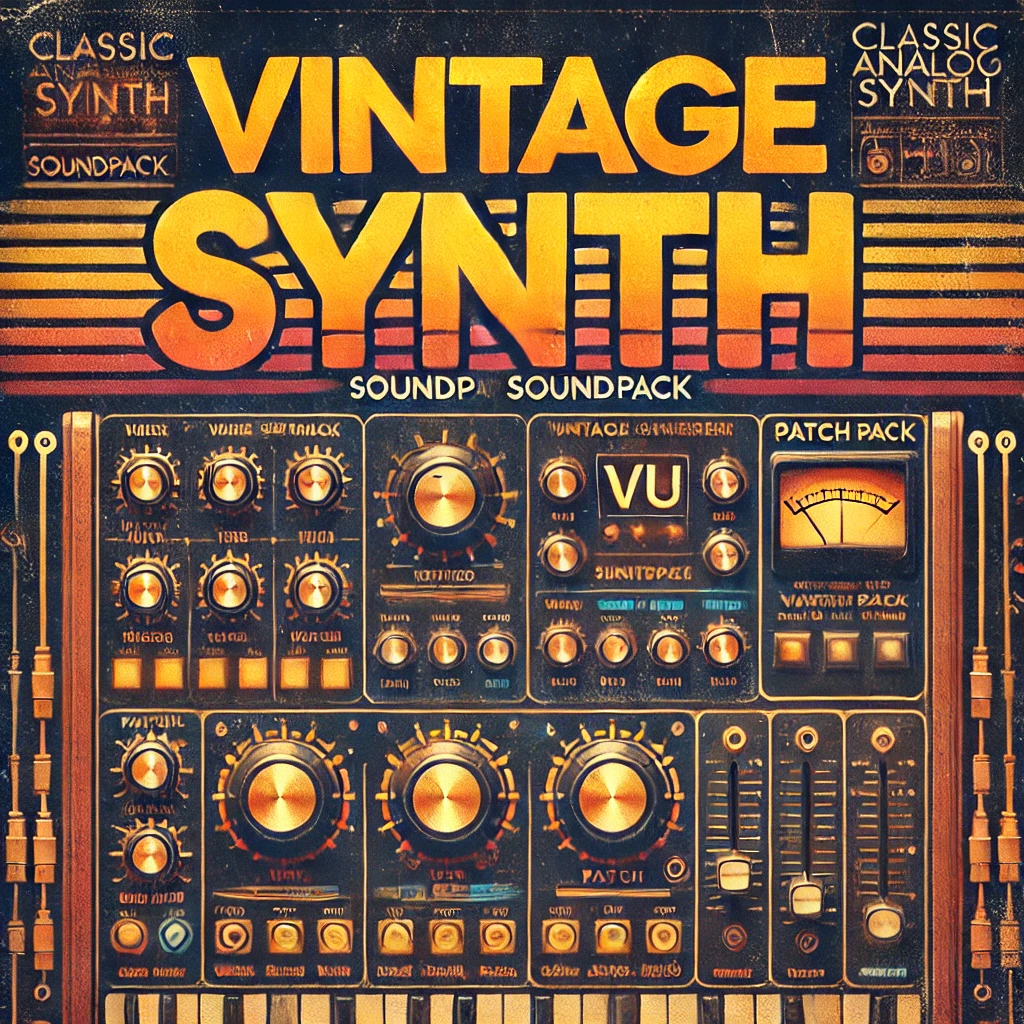Vintage Synth
Designed by Analoguesque Sound Designs (Ian Wilson)
Copyright (c) 2001 Ian Wilson
If you're into Dark Wave, Trance, Techno, Dance, Electronica, Synthpop, and other electronic music, Vintage Synth 2001
is a necessity for your collection! Growling, thumping, and pulsating basses. Screaming leads. Soaring pads. Gritty synths.
They're all in here. If the words sweep, grunge, dirty, gritty, screaming, resonating, pounding, and stomping mean
anything to you, then this is something you must have! The emphasis is on samples generated using proprietary, in-house
software synths, and building instruments from small pieces into a huge crescendo of sound. You're looking at some very
unique and highly evolving textures.
These banks were originally designed to provide samplers, and specifically E-Mu samplers, with FM sounds and various analog-style
waveforms. The waveforms were generated using custom software for generating waveforms based on 4-op FM synthesis, with multiple
custom algorithms for modifying the waves, and a resonant filter. In order to generate sounds that would loop well and spread
across the keyboard, the software was designed to fade to simple waveforms at a fixed amplitude with no shifting or FX.
Additionally, it could auto-generate the waveforms at pitchs A1, A2, A3, A4,and A5. This made it very easy to generate waveforms
that could loop perfectly and spread across the keyboard as multisamples using pitches A1 through A5. Many of the samnples have
FM attack transients, so they are distinctively FM. However the E-Mu samplers could play back samples starting at any point in
the waveform, so you could get many different sounds out of a single sample by shifting the start point of playback. You could
even remove the attack of the original sample altogether by shifting the start point past the complex attack. Additionally, the
loop start can be shifted on the E-Mu samplers, so you were not tied to the original loop point. Since these waveforms faded from
complex to simple sounds (close to a sine wave), and they were designed to loop easily, you could vary the complexity simply by
adjusting where the loop point started. ie. With a simple sound that fades from a Saw to a Sine, you could move the loop start
point into the Saw range or the Sine range of the waveform (or inbetween), giving you one or the other. This stretches the
usefullness of a waveform beyond expectation and turns a single sample into a multitude of patches that sound completely
different. It's almost like using the "Variation" buttons on modern synths like the Roland System 8, which provide variations
on the original waveform just by turning a knob. The below descriptions were taken from the original Analoguesque.com
website that had these samples for sale.
Instructions:
1. Download the archive
2. Extract the lv2 folder.
3. Copy the folder to your SD card under the folder dspcard/plugins/lv2/
4. Exit usb mode (or place SD card back in your S2400)
5. Press SHIFT + Effects/Quantize and select 'Sync Files'
6. Reboot when prompted.

